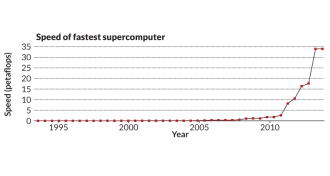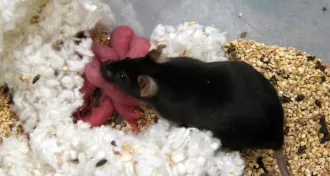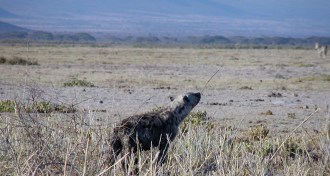
Trustworthy journalism comes at a price.
Scientists and journalists share a core belief in questioning, observing and verifying to reach the truth. Science News reports on crucial research and discovery across science disciplines. We need your financial support to make it happen – every contribution makes a difference.
All Stories by Science News Staff
-
 Astronomy
AstronomyComet ISON was punier than previously thought
The ice ball was probably no wider than New York’s Central Park.
-
 Computing
ComputingFastest supercomputers
The new list of the world’s fastest computers, now in its 20th year, has China’s Tianhe-2 on top with a processing speed of 33.9 petaflops — or quadrillions of calculations per second.
-
 Health & Medicine
Health & MedicineCancer vaccine in near future foreseen
Excerpt from the December 21, 1963 issue of SCIENCE NEWS LETTER.
-
 Health & Medicine
Health & MedicineDrug use on the rise in older set
The use of illicit drugs has declined slightly over the last decade among teens but is growing more common in people over age 50.
-
 Astronomy
AstronomyBright gamma-ray burst tests idea of event’s origins
High-energy light particles suggest that physicists need to revise their theories explaining the origin of these cosmic blasts.
-
 Life
LifeOnly two Y chromosome genes needed for viable mouse sperm
Healthy and fertile mice were born from embryos created using spermlike cells.
-
 Neuroscience
NeuroscienceAnother look at paralysis
Robotic suits help paralyzed people move, but simple behavior changes may prevent the accidents that cause the injuries.
-
 Microbes
MicrobesMicrobes help hyenas send status updates
Bacteria in the animals’ waste give off fumes that let passersby know who has been there before.
-
 Paleontology
PaleontologyOldest known T. Rex relative found in Utah
Researchers say the animal — named the gore king of the southwest — was an early member of the tyrannosaur family.
-
 Science & Society
Science & SocietyFeedback
Our redesigned cover and the astronomy stories from the Oct. 19 issue get readers' reviews.
-
 Psychology
PsychologyMale version of eating disorder replaces purging with muscle enhancers
Physique concerns can drive young men to take banned substances.
-
 Physics
PhysicsNew Atomic Accelerator
This excerpt from the December 14, 1963, issue of Science News Letter talks about how the atom smashers at Argonne National Lab have evolved.